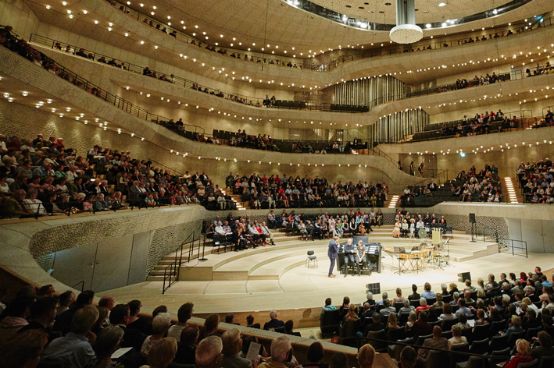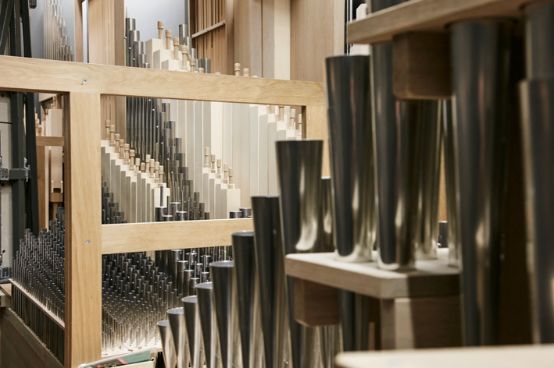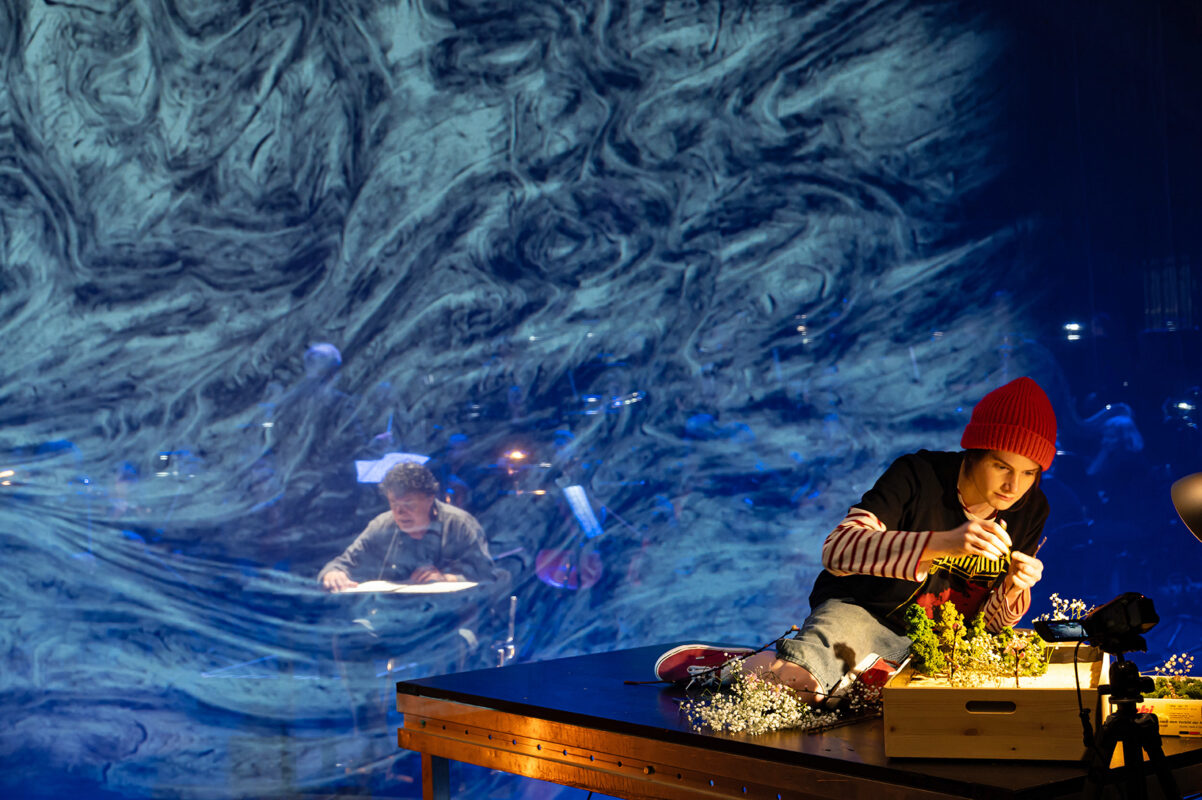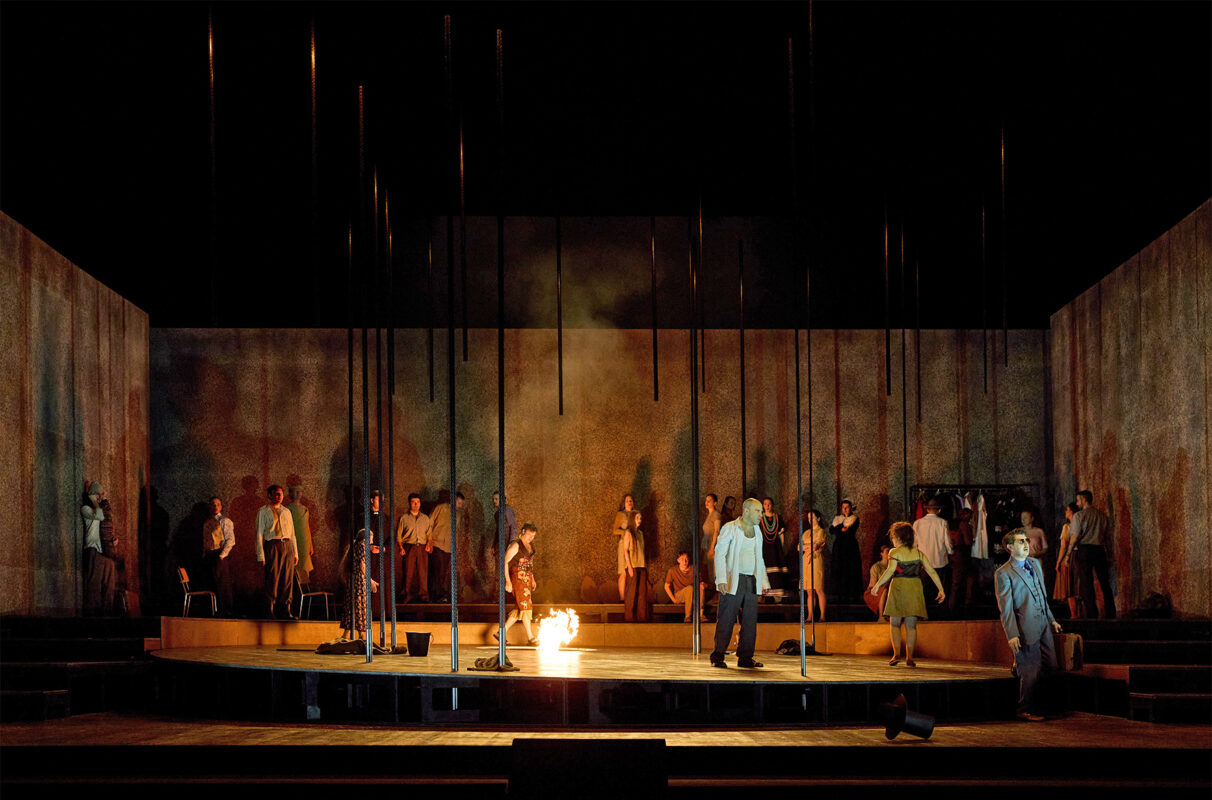To play by every trick in the book
In a long organ night on June 17, the Hamburg organists took the new Klais organ of the Elbphilharmonie under their hands and feet. A lot of sound frenzy - little sound sensuality.

Concert hall organs lead a miserable existence. At most, they are caressed and struck (toccare l'organo) a few times a year as a soloist or with orchestral accompaniment. Nevertheless, the queen of instruments is enthroned above the prestigious halls like the buffet with Rosenthal crockery and silverware in a bourgeois salon. The French also refer to the organ case as a "buffet". The old masters from Schnitger to Silbermann built their works in a closed case, usually made of solid oak, and gave it a "fermen Stand" on the rood screen. They knew why. Because the sound must first gather behind the façade before it is emitted into the nave as a mixture of pipes and stops. This is rarely the case with modern, secular organs, whose ranks of pipes stand at attention at the front like naked tin soldiers.
-

- Photo: Maxim Schulz /Elbphilharmonie
A hall is not a church
With concert hall organs, the playable literature is limited to just under three centuries. Early music with its half-tone lower, even mean-tone tuning cannot be played on it with accompaniment. Baroque orchestras carry their own chest organs onto the podium to perform Handel's solo concertos. The large organ is condemned to a "tacet", just as when a keyboard and pedal lion like Cameron Carpenter prefers to perform his escapades on his own pre-programmed electric organ rather than on the pipe organ in the hall.
Basel's Stadtcasino and Zurich's Tonhalle will both be getting new organs in the next few years following their renovations. Their predecessors have already served their purpose after just a few decades. They will be replaced rather than preserved. Their lifespan is short, and the reverberation time in concert halls is also short compared to the seconds-long reverberation in cathedrals. A hall organ is therefore far from being able to develop its sounds from the solo register to the tutti in the same spatial manner.
Large cutlery
Hamburg's new landmark, the Elbphilharmonie, has a giant organ weighing 25 tons thanks to a donation of two million euros from entrepreneur Peter Möhrle. Its pipe fronts are installed in the form of a 15 x 15 meter square on four floors in the Great Hall. Like the Fisk organ in Lausanne Cathedral, they can be played with either old or new action. High up on the console by the façade, the keys are connected to the pipes using mechanical action; below on the orchestra podium, an electrical connection is used. The mobile console is equipped with a digital control system. It allows any number of presettings for the registrations via touchscreen, which extends like a cutlery drawer.
-

- Photo: Maxim Schulz /Elbphilharmonie
From Vox coelestis to Tuba mirabilis
With 69 stops, everything is there to make organists' hearts beat faster at pitches from 16 to 16,000 Hertz. The mysterious names range from a Vox angelica to Principale major and minor, a fourfold Harmonia aetheria, a striking orchestral clarinet, a sixfold Nonencornett, an 8-foot Stentorgambe and the 32-foot reed stops Trompete and Posaune in the pedal.
4765 pipes set the tone. Their lengths range from 1 to 32 feet, specifically from 11 millimetres for the highest to almost 11 meters for the lowest note. The pipes are even coated for those with a nose of wonder, children's hands and blind people who want to touch them. However, the front pipes do not flaunt themselves at the front like traditional organ cases, but are veiled like a Queen of Sheba. Only when the shutter sills are opened do they shine in the dazzling light.
The four manuals are assigned to: Choir, Hauptwerk, Schwellwerk, Solowerwerk and Pedal. The builders, the Bonn-based company Klais, are particularly proud of the Fernwerk, whose four reed stops installed above the acoustic reflector send out their signals to visitors from the hall's firmament.
Dancing the tango with the queen
So how does it sound, the new Klais organ? This could be tested extensively during the six-hour organ night that opened the Hamburg Organ Summer 2017, after the Latvian titular organist Iveta Apkalna had already presented her queen in January.
13 male and 2 female organists played and registered the concert hall organ according to all the rules of the art in works ranging from Bach and Vivaldi to the Romantics Mendelssohn, Franck, Pierné, Widor and the modern classics David, Eben, Reda and Messiaen to a world premiere by Wolf Kerschek. The Jacobi organist Kerstin Wolf, who danced on the organ bench during the shimmering pieces by the Frenchman Thierry Escaich, the Dutchman Ad Wammes and the South African Surendran Reddy and let her feet bounce as if she wanted to dance the tango with the Queen, was original.
The hall stays cool
Players have different opinions of the new concert instrument. The church organists first have to get used to the electronics. The sound combinations range from soft to loud, from a whispering pianissimo to a menacing tutti with open swell stops. Everything is emphasized "pomposo"; the individual sounds are audible. There is a lack of subtle tonal mixing, which is due to the short reverberation time of 2 seconds, but also to Yasuhisa Toyota's acoustic aesthetics. The shell-shaped walls are designed to achieve even audibility in all 2100 seats up to the upper tiers of the Weinberg architecture in the 25-metre-high auditorium. The over-presence has its price. The organ radiates little tonal warmth. The coolness of the acoustic concept is projected into the room like air conditioning at the same temperature. One almost wistfully longs for the old organs from Hus to Cavaillé-Coll, on which the literature from the Renaissance to the late Romantic period comes into its own and fills the church rooms with intonationally balanced splendor.
Organ infographic (from the Elbphilharmonie press kit; see legend below)
-

- Graphic: © bloomimages/Elbphilharmonie
-

- Description: © Elbphilharmonie
Links








